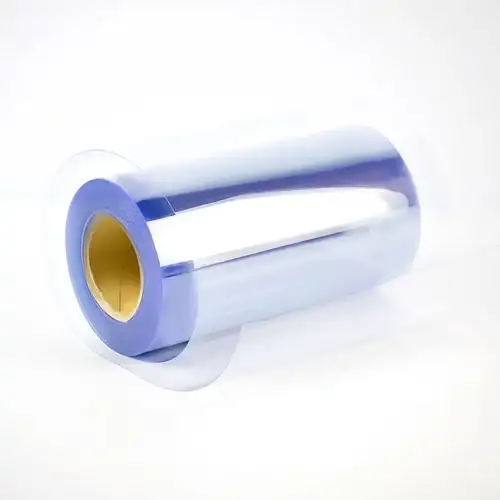Flexible Polyvinyl Chloride (PVC) pipe is a versatile and widely used material in various applications, including plumbing, irrigation, and pool systems. Unlike rigid PVC pipes, flexible PVC pipes offer the advantage of ease in installation, especially in tight spaces or areas requiring frequent directional changes. However, one of the critical considerations when selecting flexible PVC pipe is understanding its pressure rating. This article delves into the factors influencing the pressure rating of flexible PVC pipes, provides comparative analyses, and addresses common questions to assist users in making informed decisions.

1. What Is the Pressure Rating of Flexible PVC Pipe?
The pressure rating of a pipe indicates the maximum internal pressure the pipe can withstand safely. For flexible PVC pipes, this rating is typically lower than that of rigid PVC pipes due to differences in wall thickness and material composition. The pressure rating is usually expressed in pounds per square inch (psi) and can vary based on several factors, including pipe diameter, wall thickness, and operating temperature.
Key Factors Influencing Pressure Rating:
-
Wall Thickness: Thicker walls generally allow higher pressure ratings.
-
Pipe Diameter: Smaller diameters can handle higher pressures due to reduced internal volume.
-
Material Composition: The quality and type of PVC resin used affect the pipe’s strength.
-
Operating Temperature: Higher temperatures can reduce the pressure rating of PVC pipes.
2. Comparative Analysis: Flexible PVC vs. Rigid PVC Pressure Ratings
| Pipe Type | Typical Pressure Rating | Wall Thickness | Common Applications |
|---|---|---|---|
| Flexible PVC | 60–100 psi | Thinner | Pools, spas, irrigation systems |
| Rigid PVC | 160–450 psi | Thicker | Potable water, industrial uses |
Note: The values provided are general estimates and can vary based on specific product standards and manufacturers.
3. Standards and Certifications
Flexible PVC pipes are manufactured in compliance with various standards to ensure safety and performance. Some of the relevant standards include:
-
NSF/ANSI 14: Ensures that the pipe is suitable for potable water applications.
-
ASTM D1785: Covers the specifications for Schedule 40, 80, and 120 PVC pipes.
-
IAPMO PS 33-2011: Pertains to flexible PVC hoses used in plumbing systems.
It’s essential to verify that the flexible PVC pipe meets the necessary standards for your specific application.
4. Temperature Effects on Pressure Rating
The pressure rating of PVC pipes decreases as the operating temperature increases. For instance, a pipe rated at 100 psi at 73°F may only be rated at 60 psi at 120°F. Therefore, it’s crucial to consider the operating temperature when selecting a flexible PVC pipe to ensure it can handle the required pressure.
5. Common Applications of Flexible PVC Pipe
Flexible PVC pipes are commonly used in applications where ease of installation and flexibility are paramount. Some typical uses include:
-
Swimming Pools and Spas: Connecting pumps, filters, and heaters.
-
Irrigation Systems: Transporting water to various parts of a garden or lawn.
-
Aquarium Systems: Circulating water in fish tanks and filtration units.
6. Frequently Asked Questions (FAQs)
Q1: Can flexible PVC pipe be used for high-pressure applications?
Flexible PVC pipe is generally not recommended for high-pressure applications. Its pressure rating is lower than that of rigid PVC pipe, making it more suitable for low to medium-pressure systems. For high-pressure needs, rigid PVC or other materials like CPVC or metal pipes should be considered.
Q2: How does temperature affect the pressure rating of flexible PVC pipe?
As the temperature increases, the pressure rating of PVC pipe decreases. This is due to the reduction in material strength at higher temperatures. For example, a pipe rated at 100 psi at 73°F may only be rated at 60 psi at 120°F. Therefore, it’s essential to account for temperature variations in your application.
Q3: Is flexible PVC pipe suitable for drinking water systems?
Flexible PVC pipe can be used in drinking water systems if it complies with NSF/ANSI 14 standards, which certify the pipe for potable water use. Always check for the appropriate certifications before installation.
Q4: How do I determine the appropriate size of flexible PVC pipe for my application?
The appropriate size depends on factors like the required flow rate, pressure, and the distance the fluid needs to travel. It’s advisable to consult with a professional or refer to manufacturer guidelines to select the correct pipe size.
Q5: What are the advantages of using flexible PVC pipe over rigid PVC pipe?
Flexible PVC pipe offers several advantages, including easier installation in tight spaces, reduced need for fittings, and the ability to absorb vibrations. However, it comes with a lower pressure rating compared to rigid PVC pipe.
Conclusion
Understanding the pressure rating of flexible PVC pipe is crucial for ensuring the safety and efficiency of your plumbing or irrigation system. By considering factors such as wall thickness, diameter, material composition, and operating temperature, you can select the appropriate pipe for your specific needs. Always ensure that the pipe meets the necessary standards and certifications for your application.
References:
- NSF/ANSI 14 – Certification for Potable Water Systems
- ASTM D1785 – Standard Specification for Poly(Vinyl Chloride) (PVC) Plastic Pipes
- IAPMO PS 33-2011 – Standard for Flexible PVC Hose for Plumbing Systems
- The PVC Institute – Introduction to PVC and Its Applications
- Engineering Toolbox – PVC Pipes Pressure Rating
